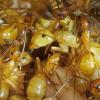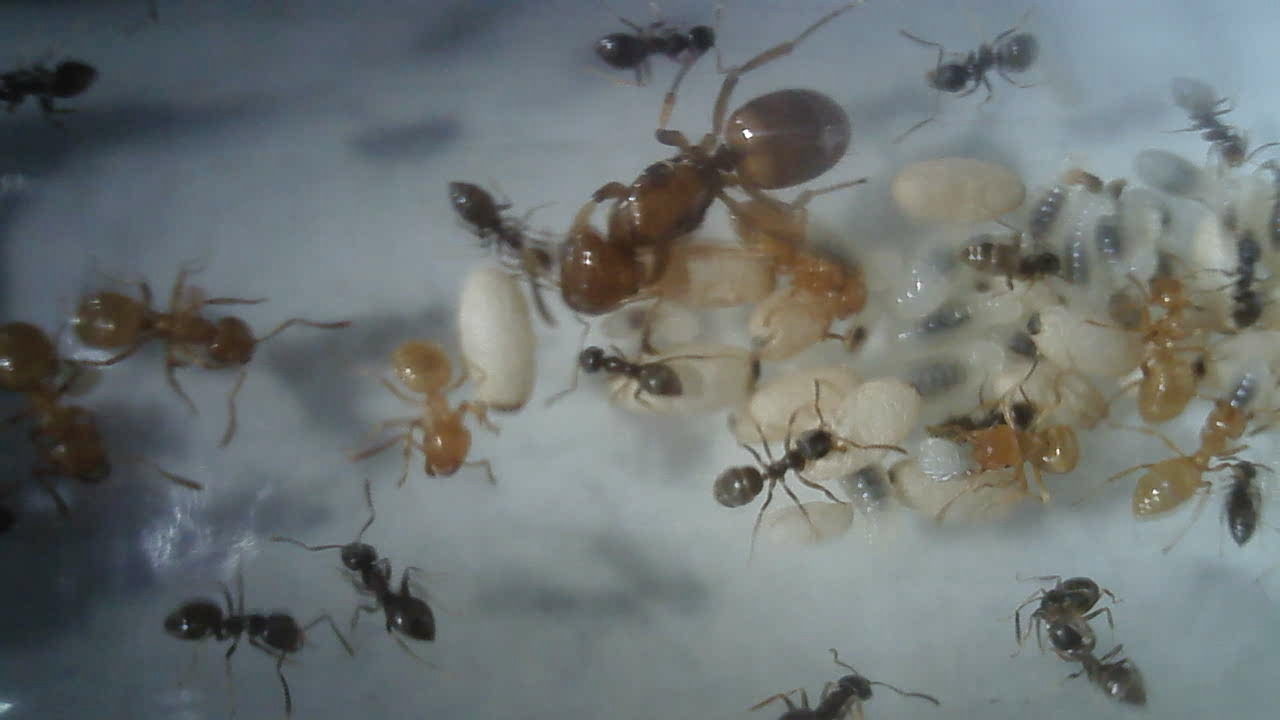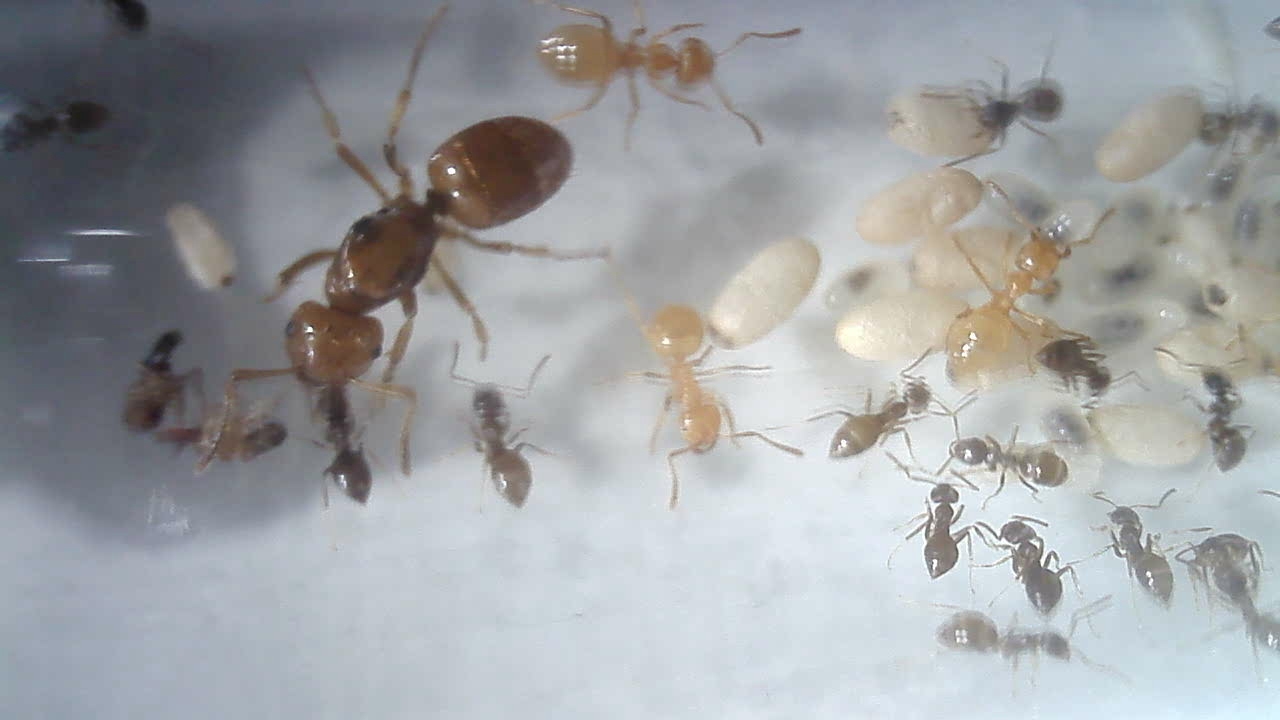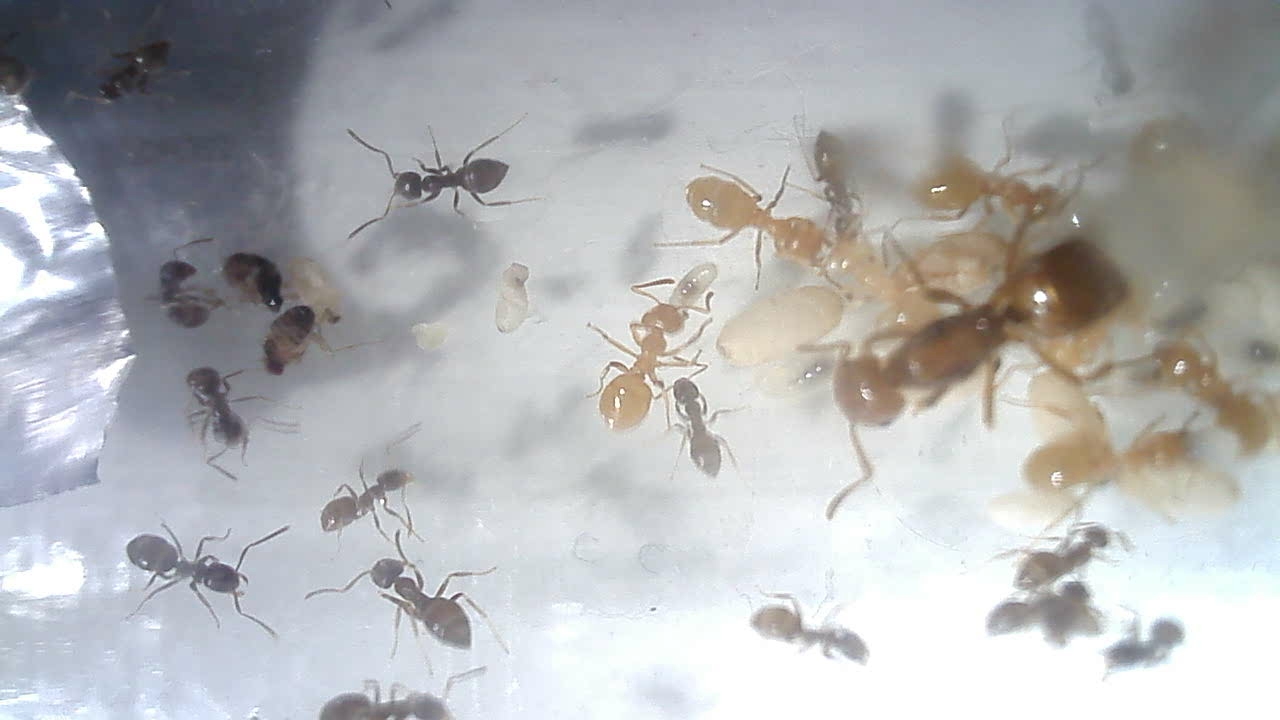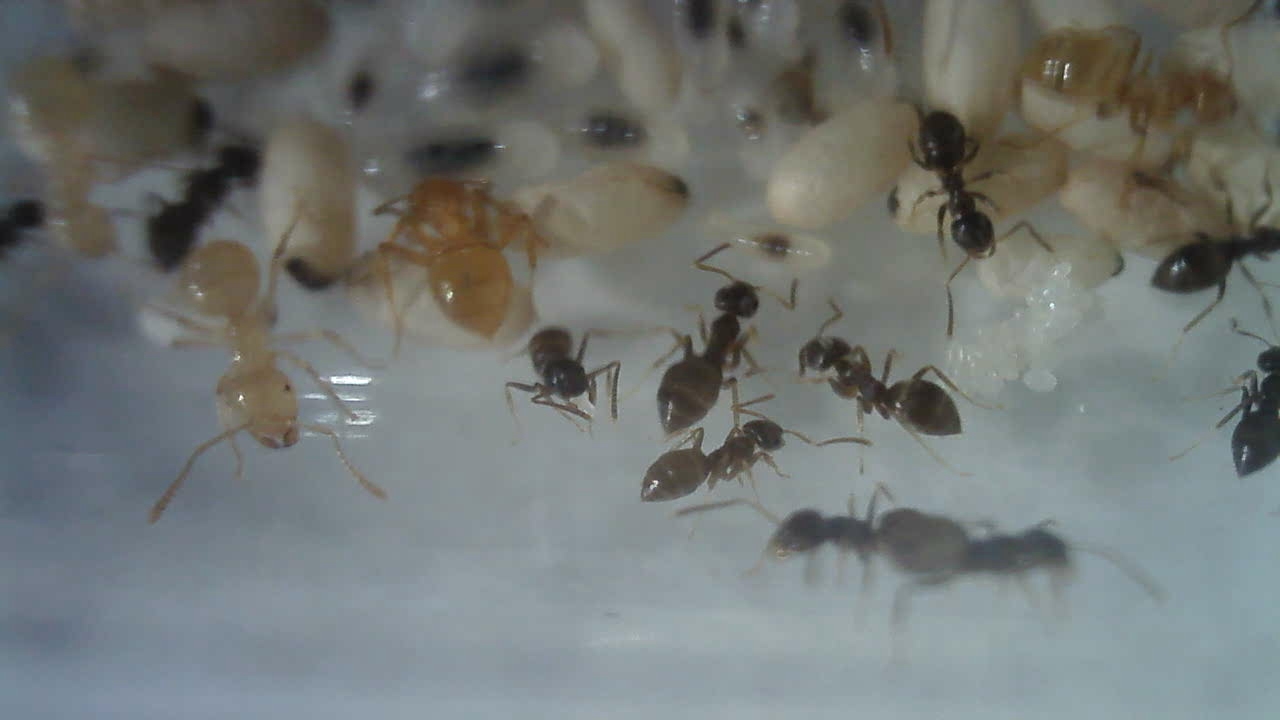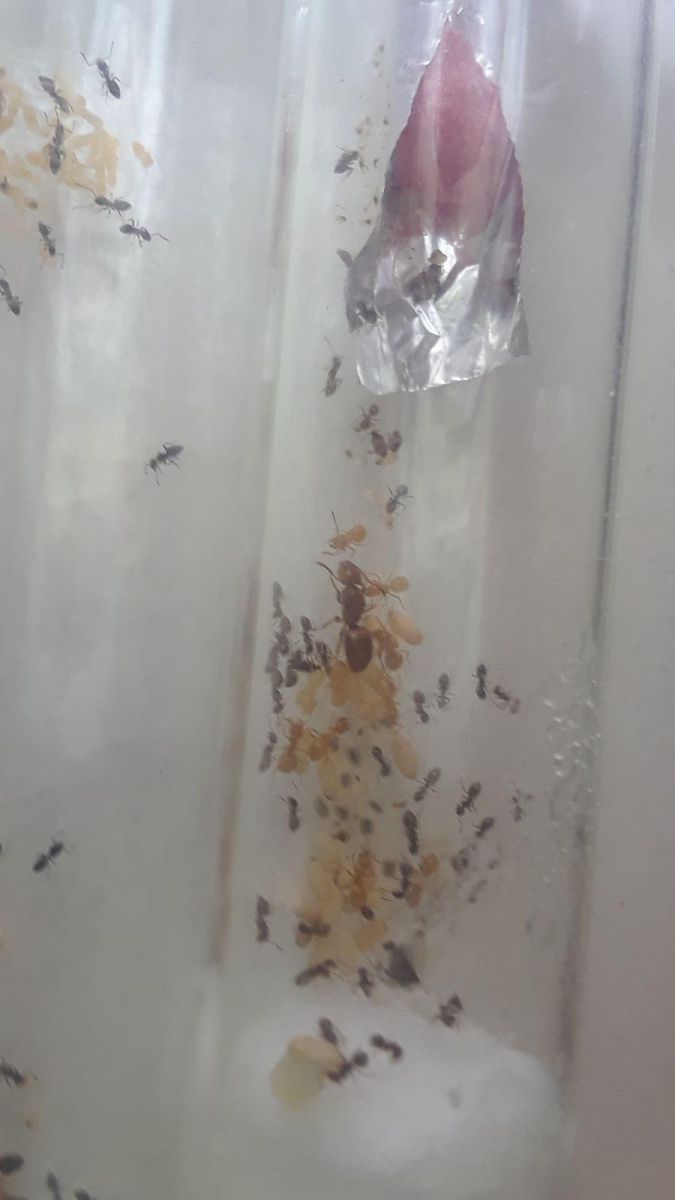So I took a calculated risk with my most successful colony (#4) today. It came about as a result of dying host workers. There's still a dozen or so left alive along with the 6-8 L. Interjectus workers, but I don't want the work force die out and cause the colony to stall and eventually fizzle out like my L. Latipes colony is. I decided to flip a nearby stone where I knew a huge L. Neoniger colony lives and check for larvae. Sure enough there was a ton of it. Off to the side, seperate from the rest, I saw some female alate larvae as well. I scooped some of what I hope is worker larvae (could be males though - I hope not) and put a few in one of my L. Neoniger colonies. The workers took it and out it with their own brood, so it passed that test. Next, I a few in with my least successful L. Interjectus colony and they also accepted it and out it with their brood. Since I was 2 for 2 I put the rest of it in with colony #4. They, too, accepted it. As you can see they are stacking it all by the cotton with the queen's own brood. This will give her a huge workforce as long as they are workers. On the other hand, it could take resources away from the L. Interjectus larvae and the introduced brood could turn out to be male. The larvae is quite small, slightly smaller than an average L. Neoniger worker, but looks almost ready to pupate.
I'd like to know your opinions on how you guys think this will turn out.
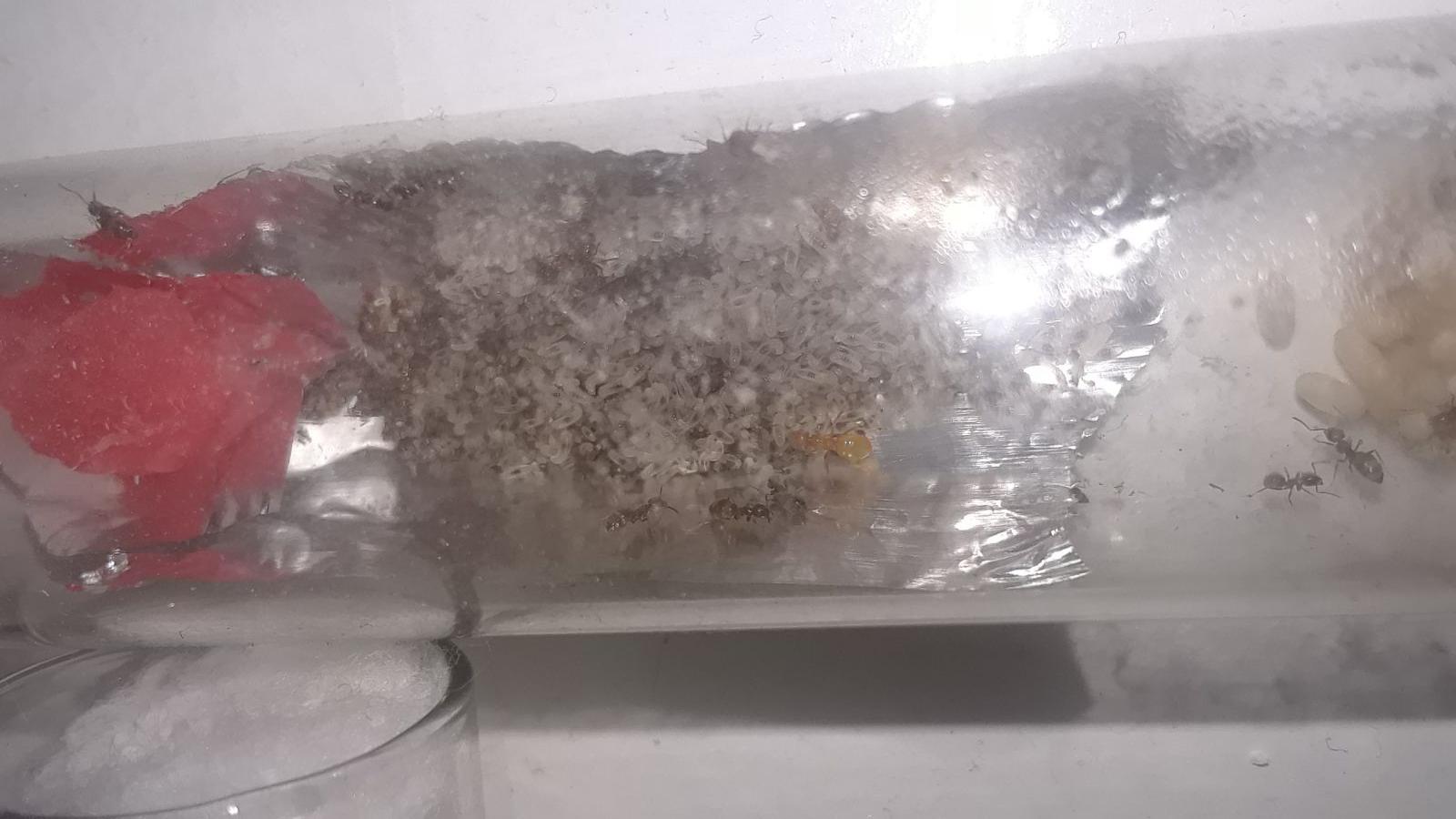
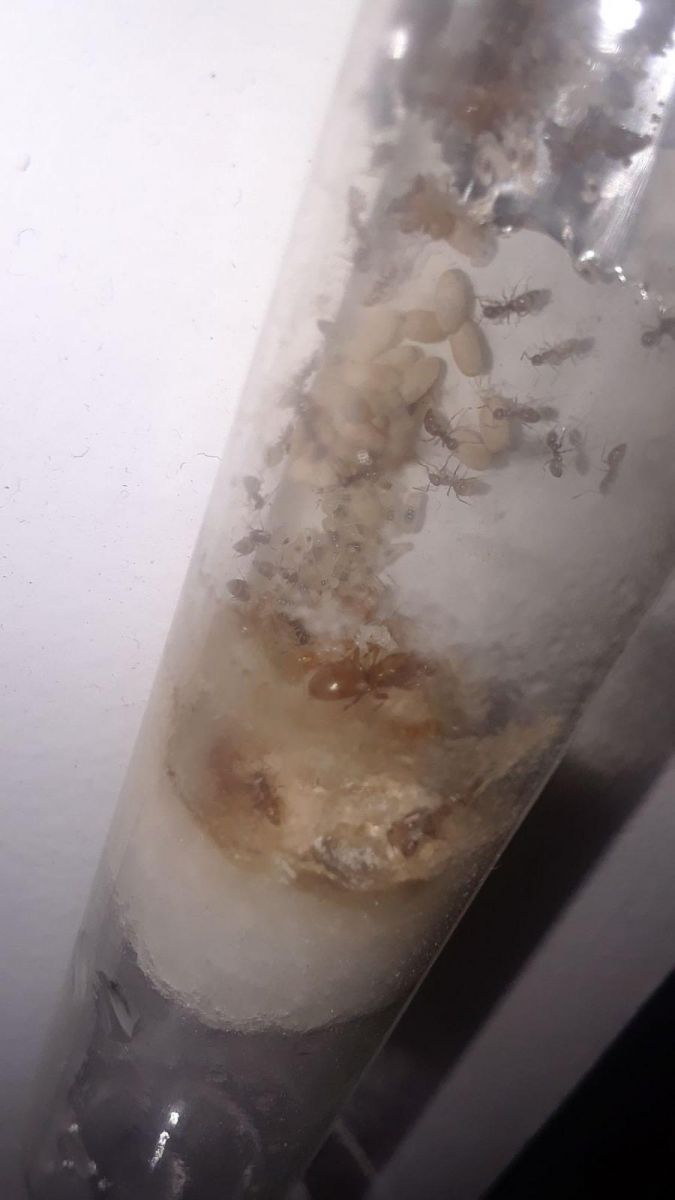
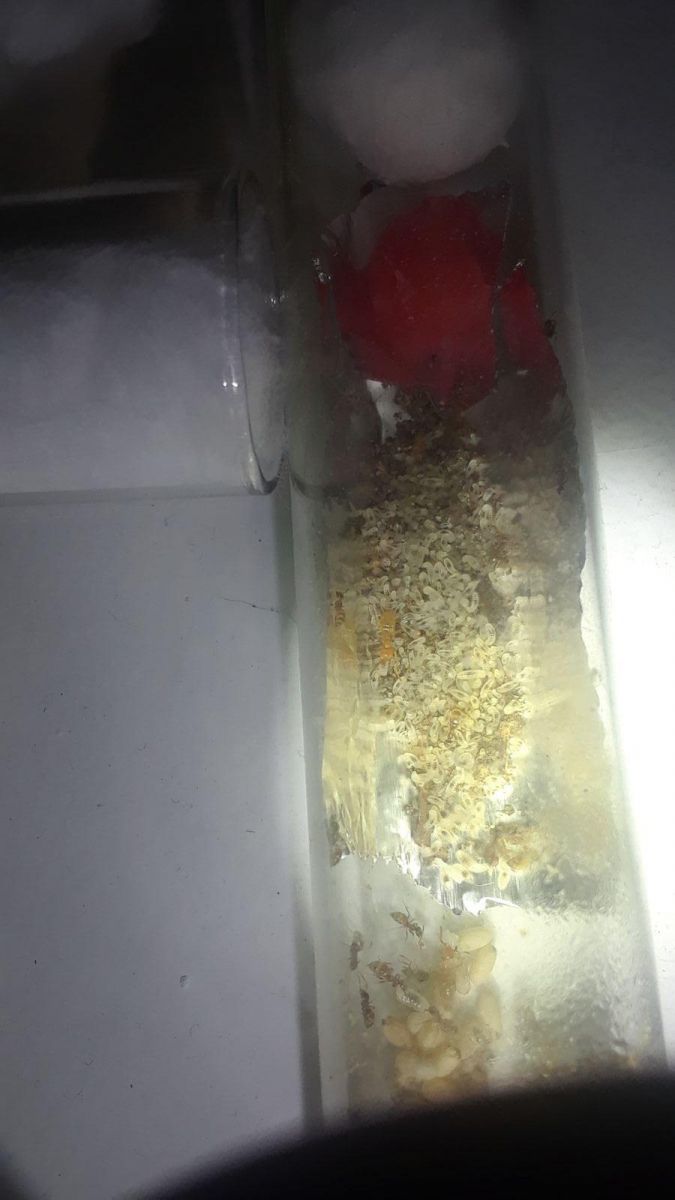
I'm going to work on some better pics. I knew these werent great, but after posting I can see that they're pretty bad.
Here we go:
Here's the L. Neoniger larvae mixed with the L. Interjectus. The L. Interjectus are the larger ones.
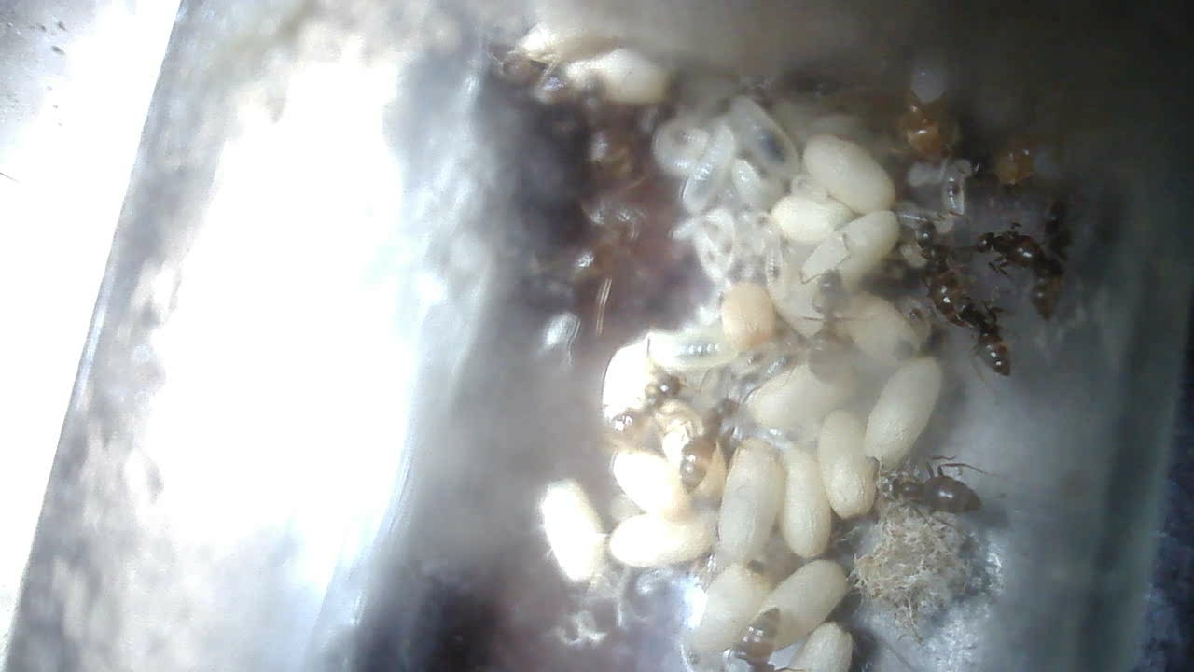
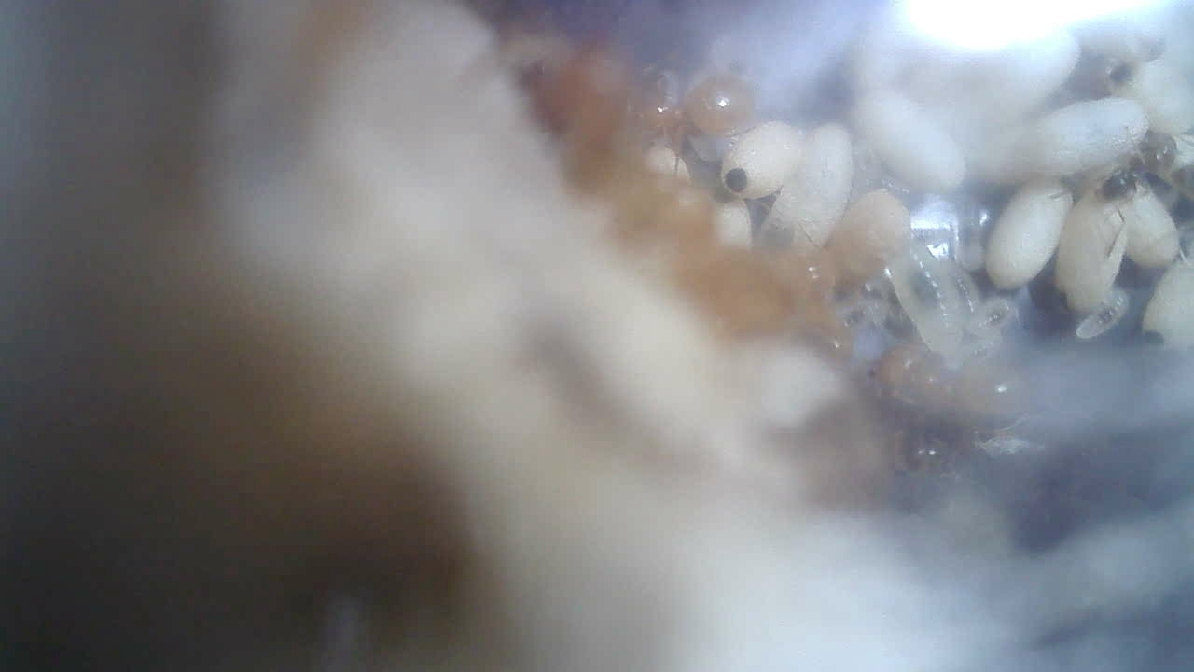
A couple pics of newly laid L. Interjectus eggs.
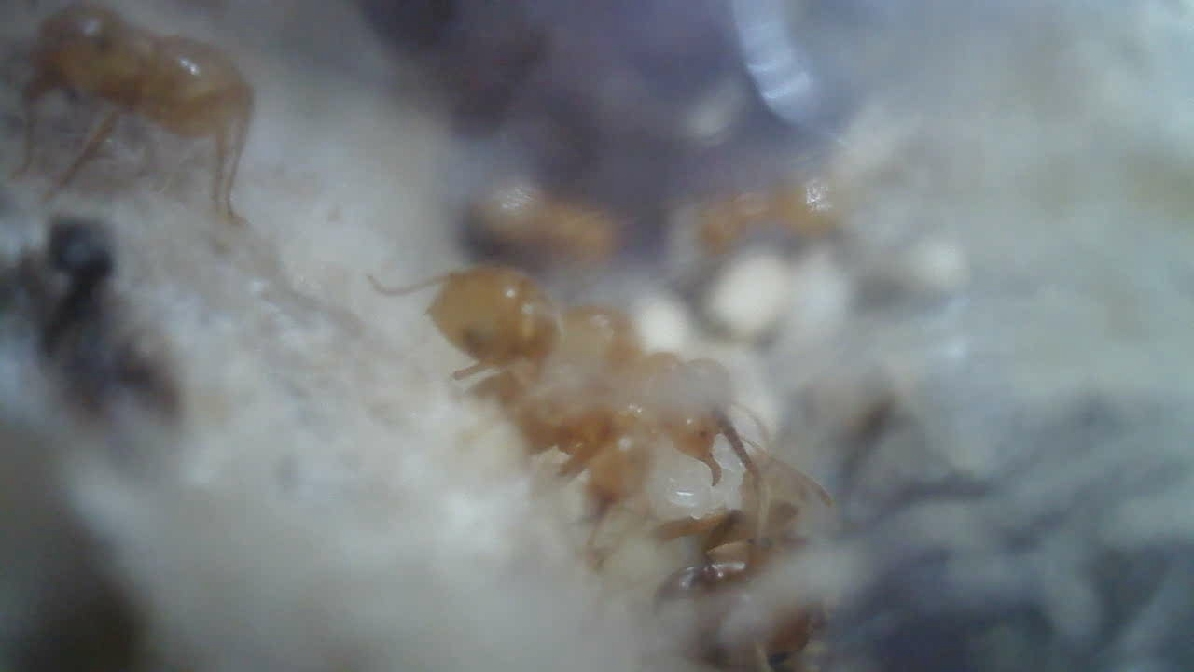
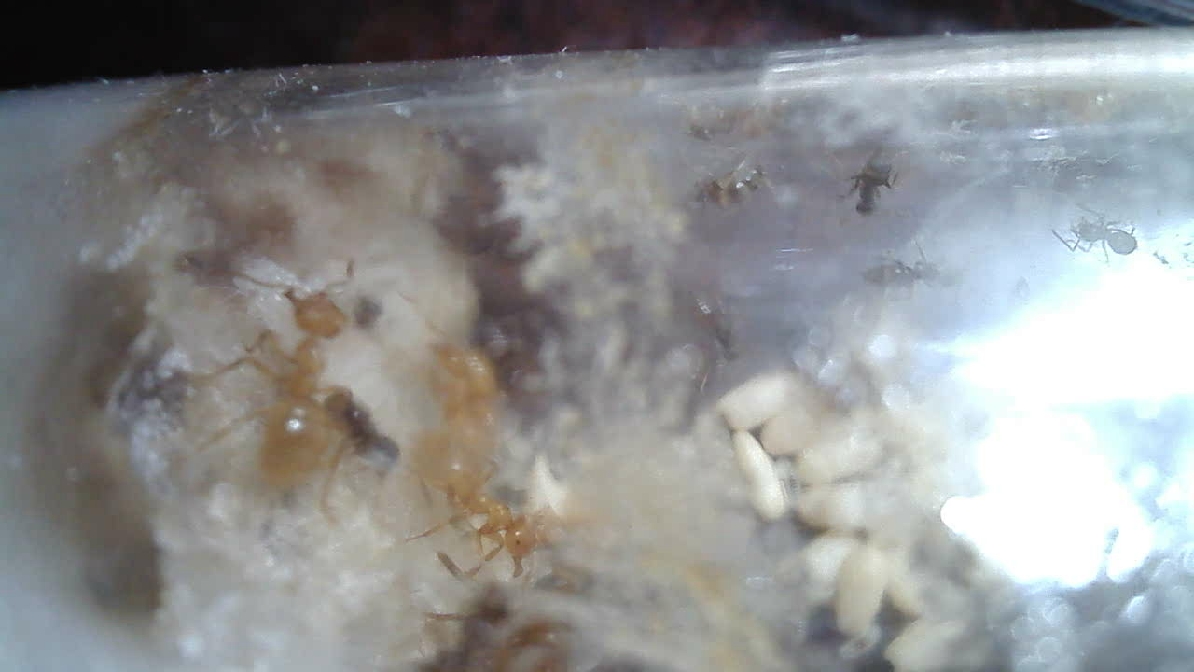
All the L. Neoniger brood that the hosts are moving to the back of their tube. If comparing larvae size to the host workers, keep in mind that these hosts are only about 80% of their potential size. They were all nanitics from one of my L. Neoniger queens.
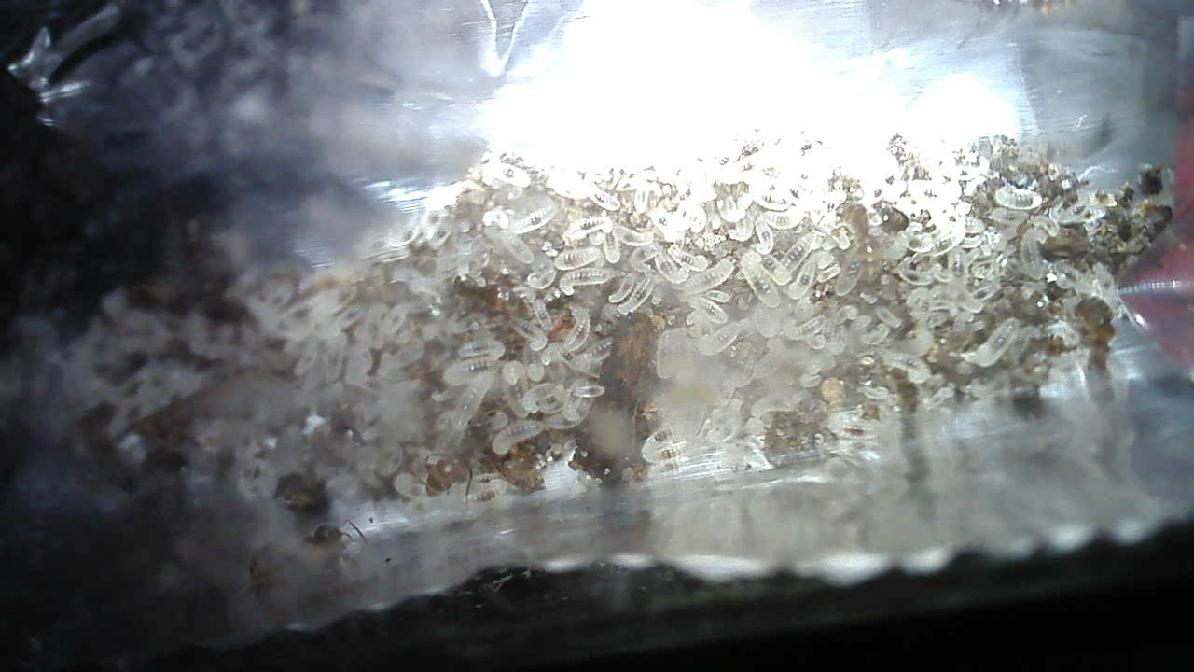
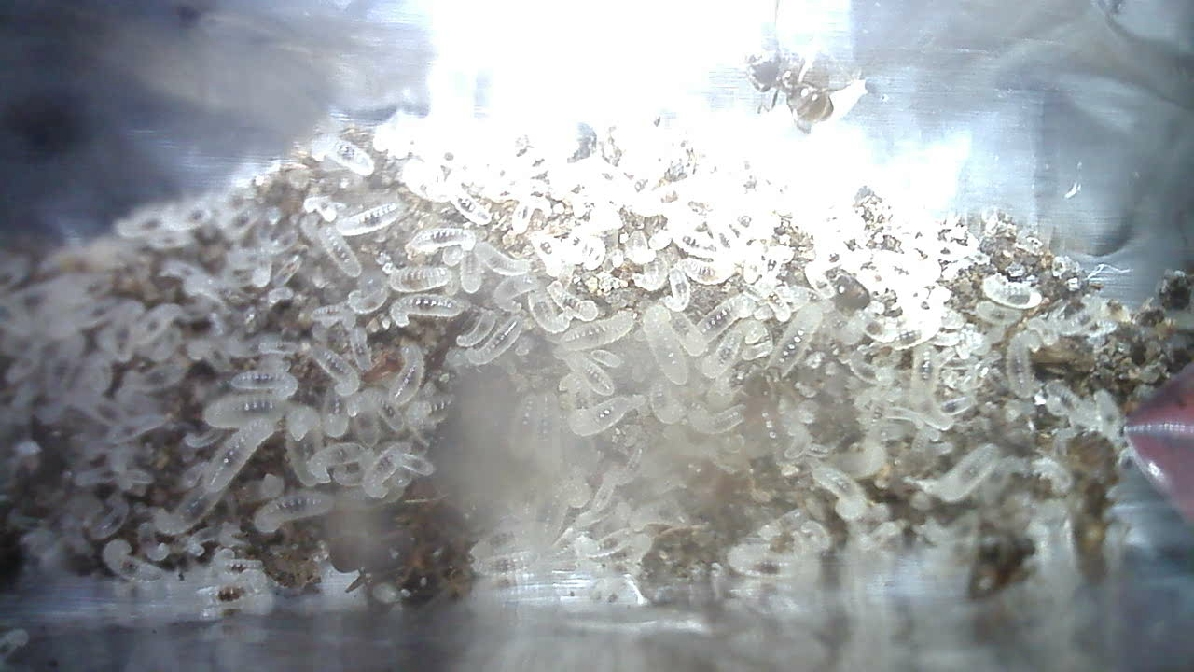
Edited by Jamiesname, June 11 2019 - 5:34 PM.







